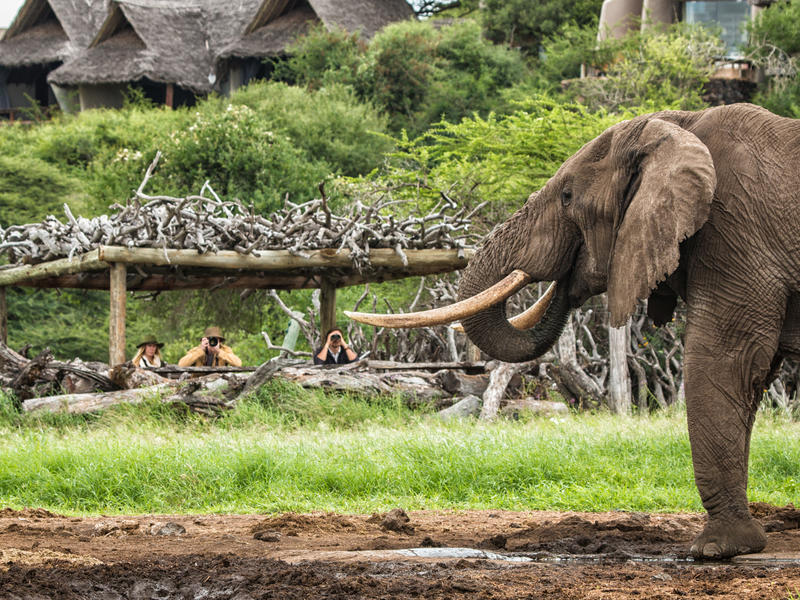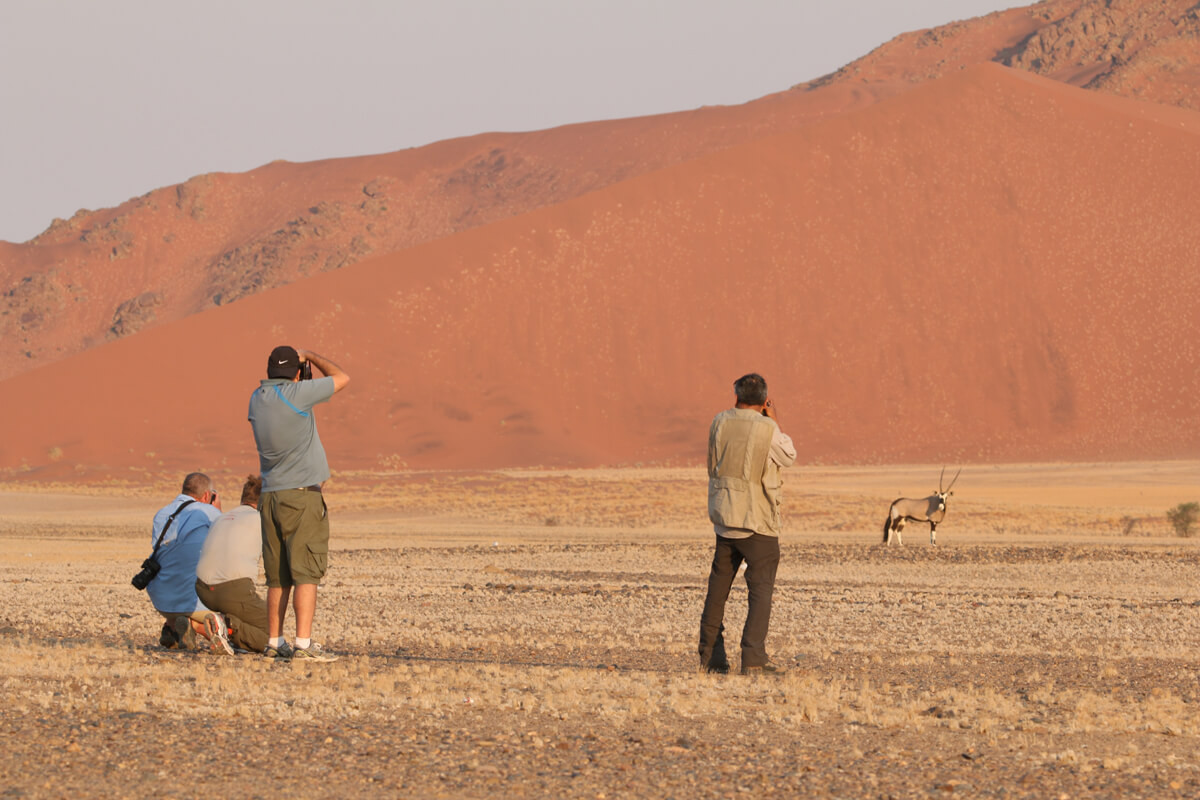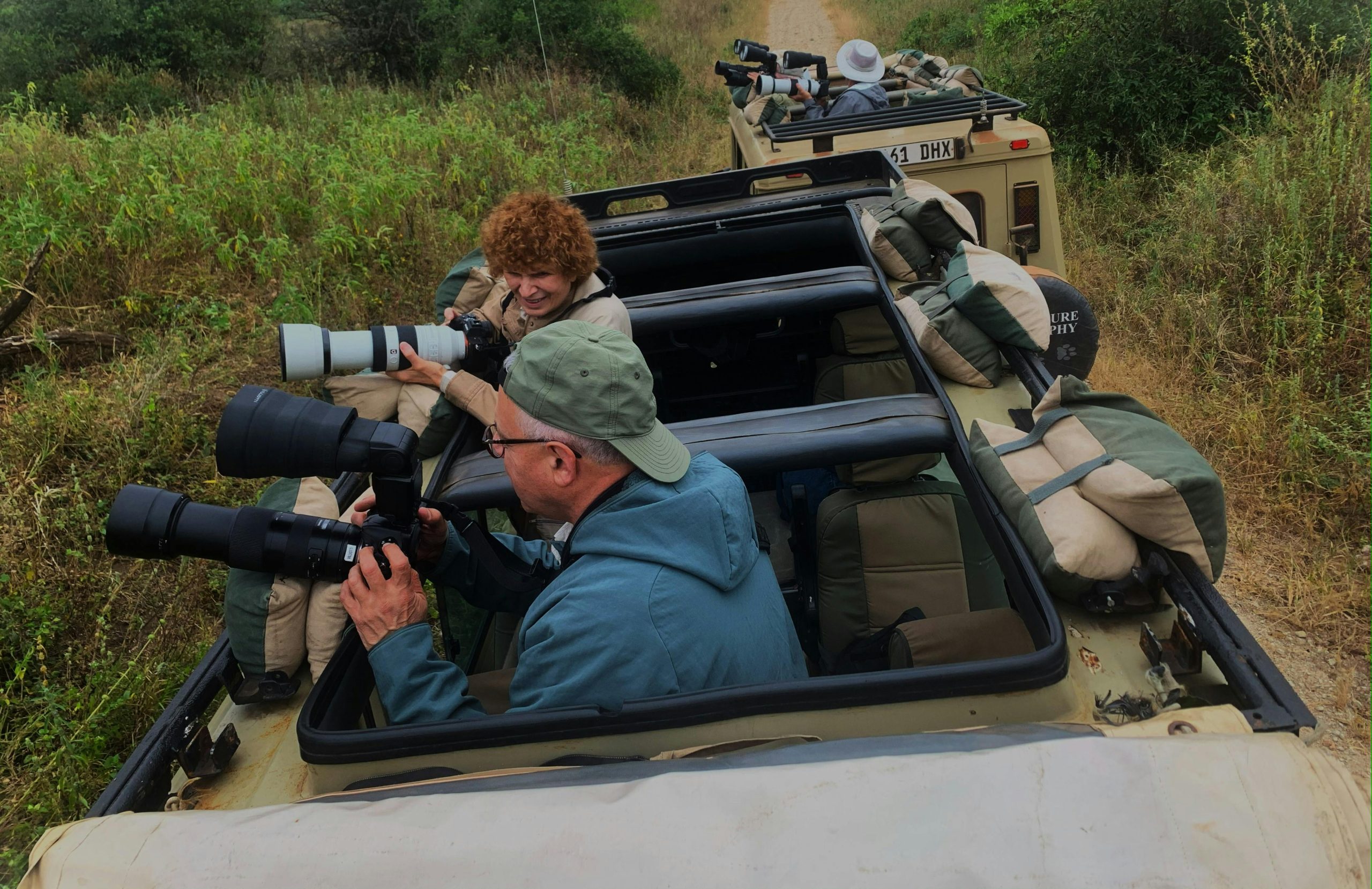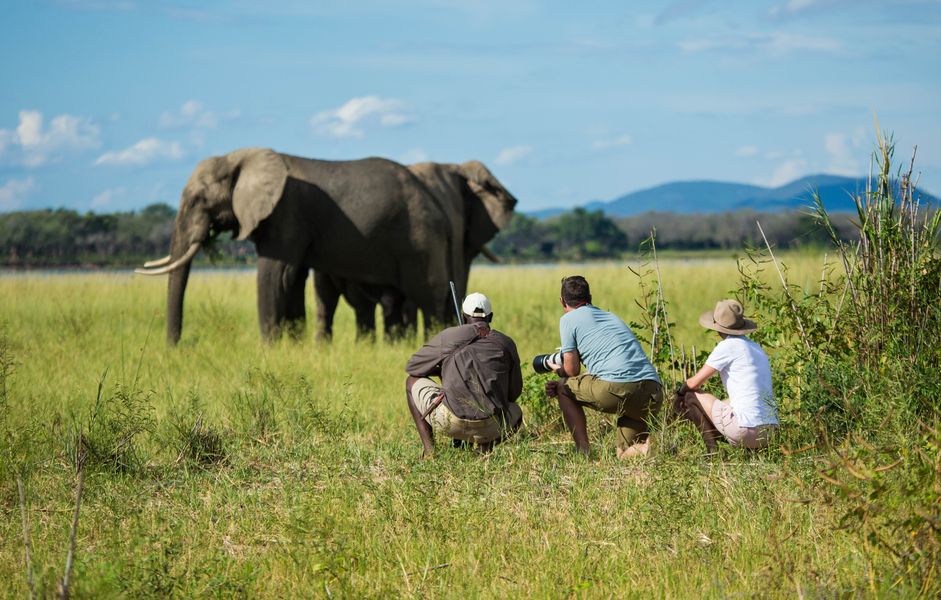Photographers can’t get enough of Africa’s landscapes, which are literally picture-perfect during its famous Green Season, typically from November to April.
Imagine spectacularly lush greenery, dramatic light and skies, abundant birds and wildlife (and many adorable baby animals), gushing rivers and waterfalls, and much more.
If you’re planning a Green Season safari with your camera at the ready, here are some tips to take full advantage of your beautiful surroundings with every snap. We’ve also included our top recommendations for photography-friendly adventures.

Top Green Season photography tips
- Understand the light: The Green Season’s overcast skies create a natural diffuser, softening the light and reducing harsh shadows. This soft light is ideal for capturing the true colors of the landscape and wildlife. It’s especially effective for portrait-style shots of animals, as it evenly illuminates their features and minimizes glare in their eyes. Experiment with different times of the day to see how the diffused light changes the mood and tone of your photos.
- Use rain to your advantage: Rain adds a dynamic element to photographs, creating a mood ranging from tranquil to dramatic. Capture the way rain changes the environment, like darkening the bark of trees or creating intricate patterns on animal coats. Photographing wildlife in the rain can also capture behaviors specific to wet conditions like animals shaking off water or using leaves for shelter. Just remember to protect your equipment with waterproof covers!
- Experiment with macro photography: Macro photography allows you to discover an overlooked world. The rain and dew create good conditions for photographing small details like water droplets on leaves, the textures of flowers, or the intricate patterns on insects. This type of photography requires patience and a steady hand, but the results can be stunning and offer a different perspective on the African landscape.
- Seek unique wildlife interactions: During the Green Season, many animals give birth, providing opportunities to capture tender moments between moms and their babies. Ensure you remain respectful and maintain a safe distance to avoid startling the animals and for your safety.
- Pack adequate protection for your gear: Humidity and rain can damage sensitive camera equipment. Use silica gel packets to control moisture in your camera bag, and have rain covers ready for sudden downpours. Also, consider a waterproof bag or case for transporting equipment during boat trips or in heavy rain.
- Utilize the vibrant colors: The landscape’s colors become more saturated after rainfall. This natural saturation enhances the green of the leaves, the red of the soil, and the varied hues of wildflowers and birds. Use these colors to create a vivid and lively composition, highlighting the contrast between the wildlife and their environment.
- Focus on water bodies: Bodies of water become fuller and more dynamic during the Green Season. This change in the landscape offers new opportunities for photographing aquatic birds, animals coming to drink, and reflections in the water. The increased water flow can also create interesting features like waterfalls or rapidly flowing rivers, adding a dynamic element to landscape shots.
- Embrace muddy conditions: Mud can add texture and struggle to your wildlife photos. Capture the challenge animals face moving through muddy terrain or the playfulness of animals like elephants or hippos enjoying the mud. Don’t forget to snap pictures of the animals’ muddy hoof/paw prints.
- Experiment with slow shutter speeds: Slow shutter speeds in low-light conditions can create artistic and dreamy images. Capture the movement of grass in the wind, flowing water, or animal movements, such as flying birds or running animals. This technique requires practice and a good understanding of your camera settings but can yield gorgeous results.
- Prepare for early mornings: Wildlife is often most active in the early morning. Plan to start your day before sunrise to capture the first light and the animals’ morning routines. The soft morning light can create beautiful, warm images and is also the best time for bird photography.
- Look for reflective surfaces: After rain, small pools of water can create natural mirrors, offering opportunities for reflective photography. Capture reflections of animals, trees, or the sky in these pools. This technique can add symmetry and an artistic element to your photographs.
- Respect the environment and local cultures: Always be mindful of your photography’s impact on the environment and local communities. Avoid disturbing wildlife or damaging habitats. When photographing people or cultural sites, seek permission and respect local customs and traditions. Ethical photography practices protect your subjects and enrich your experience and the stories you can tell through your photos.

Our top suppliers offering photographic safaris
Mashatu Game Reserve – Botswana
Mashatu Game Reserve has an award-winning hide explicitly designed to empower photographers to get that perfect shot. Matebole hide is a sunken hide situated at a busy watering hole, attracting diverse wildlife, especially herds of elephants.
The reserve is also known for its PhotoMashatu vehicle, customized for photography, featuring space for equipment and special low-level floors for optimal shooting angles. With over a decade of experience, the PhotoMashatu team provides comprehensive support, making it a must-visit for those keen on wildlife photography. However, the experience is equally enriching for non-photographers.

Great Plains – across Africa
Many Great Plains camps and lodges attract photographers from far and wide. The collection offers complimentary Canon Cameras (including lenses) in all its reserve-level camps. It also downloads all its guests’ captured images and videos onto a USB so they can take them home. Prepare for snapping spectacular sunrises over the Zambezi River at Tembo Plains Camp and getting up close with wildlife inside Ol Donyo’s Lodge’s two photographic hides, famous for attracting ‘big tusker’ elephants.

READ RELATED CONTENT: GILTEDGE Travel Experts’ 2024 Travel Bucket List
Ultimate Safaris – Namibia
Ultimate Safaris is well-known for its 12-day photographic safari in Namibia. It takes you on a journey to capture the unique beauty of Namibia’s vast, ancient landscapes and rich cultural heritage alongside specialized guides. Photograph the stunning dunes of Sossusvlei, the ghost towns of the south, and the incredible wildlife in Etosha National Park.
Ultimate Safaris provides custom vehicles equipped for photography and comfort, and their naturalist guides offer deep insights into the local environment and culture, enhancing the safari experience.

And these are just a handful of the wonderful photographic adventures awaiting in Africa. GILTEDGE also offers a popular photography-focused tour – An African Journey through a Photographer’s Lens, whisking you away to Botswana, Zambia, and Namibia, where you’ll admire Victoria Falls, stay on a luxury houseboat, and weave through the Okavango Delta’s winding waterways.
READ RELATED CONTENT: Victoria Falls: Why Zambia?
Contact us for more information or to start planning your African safari.
